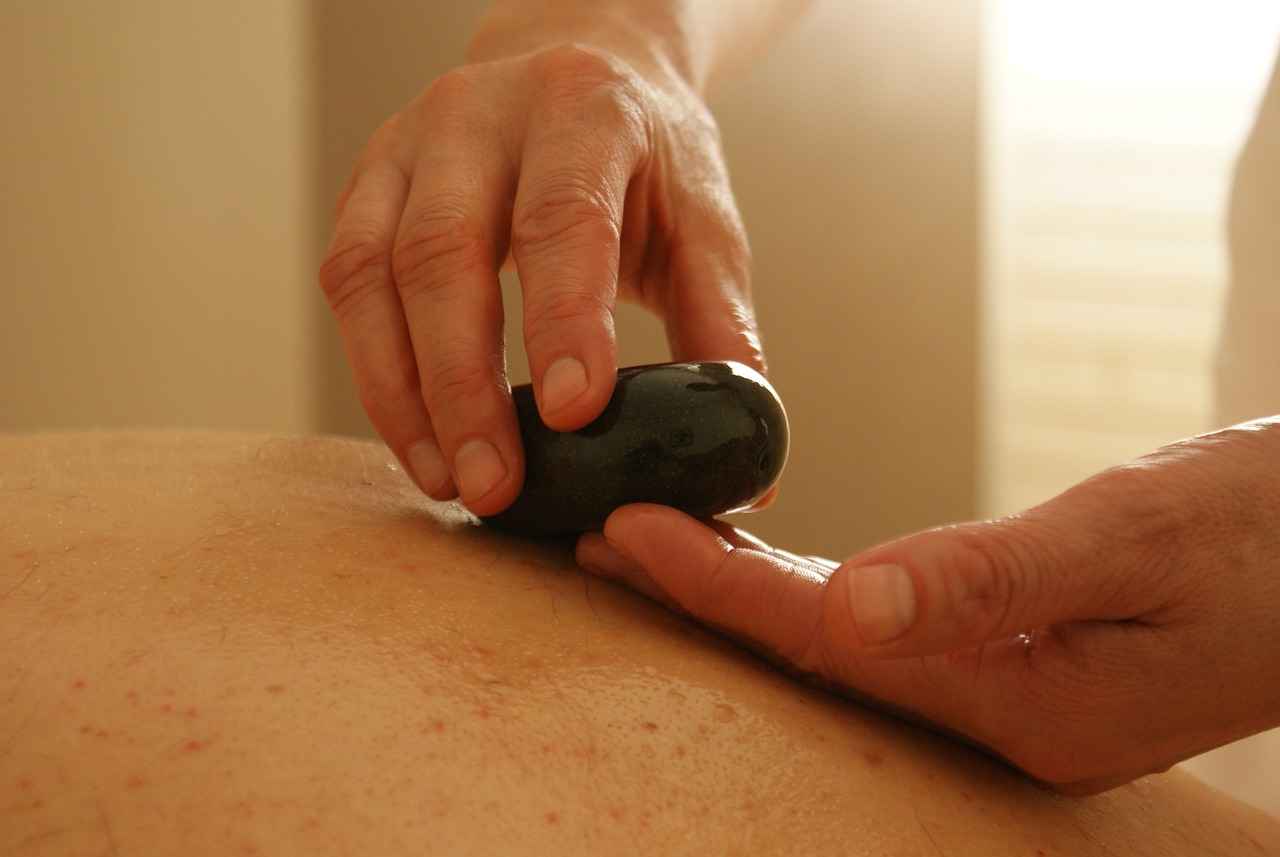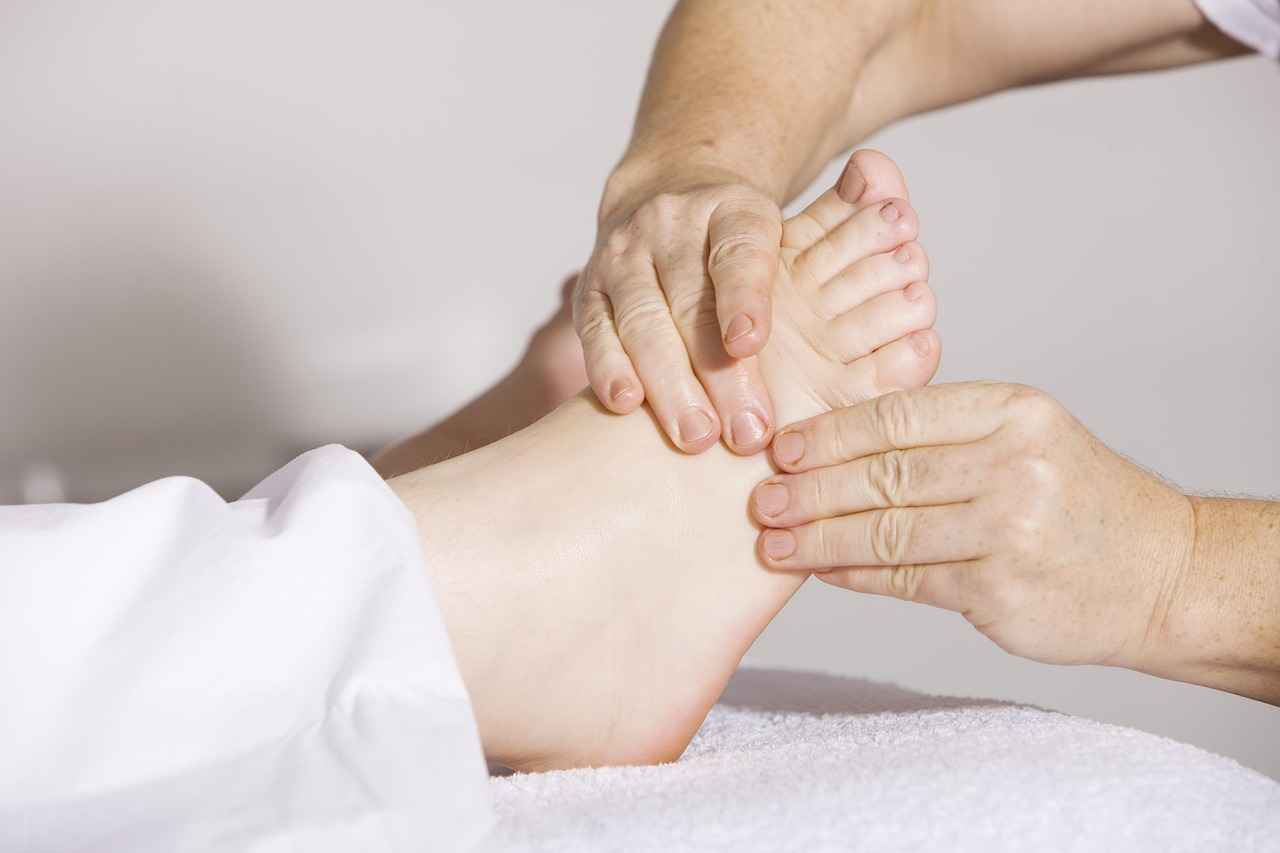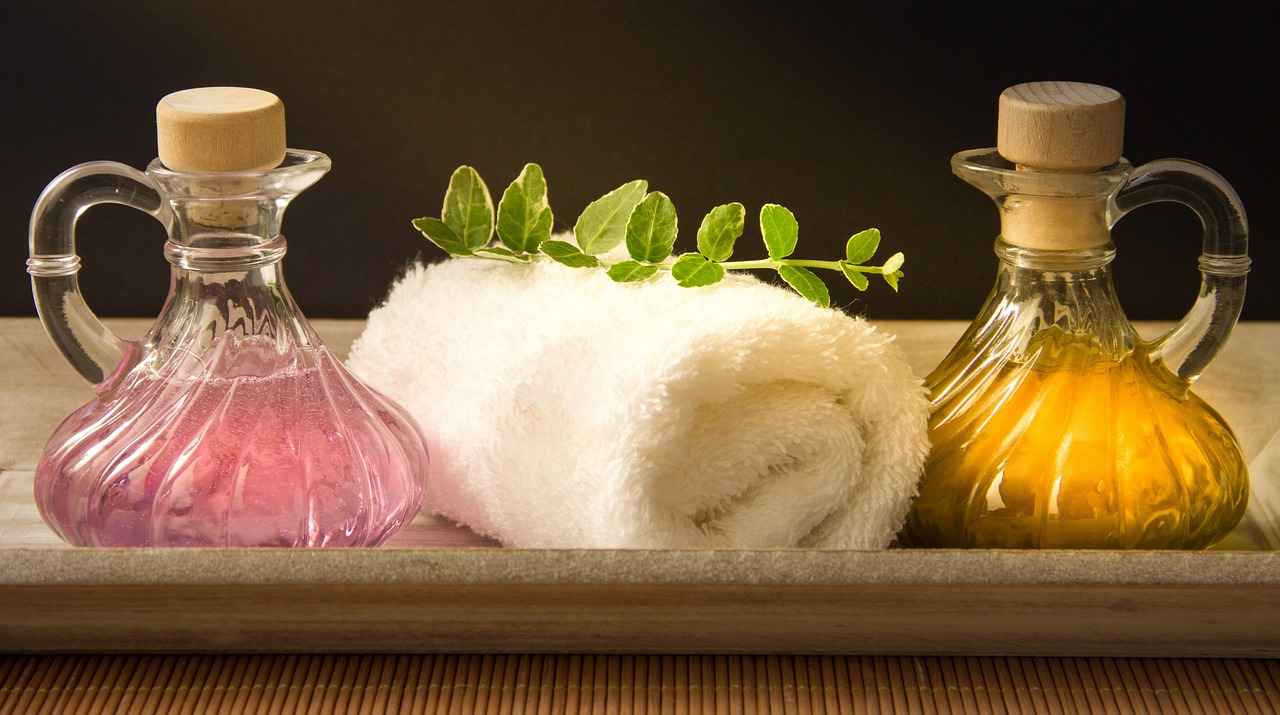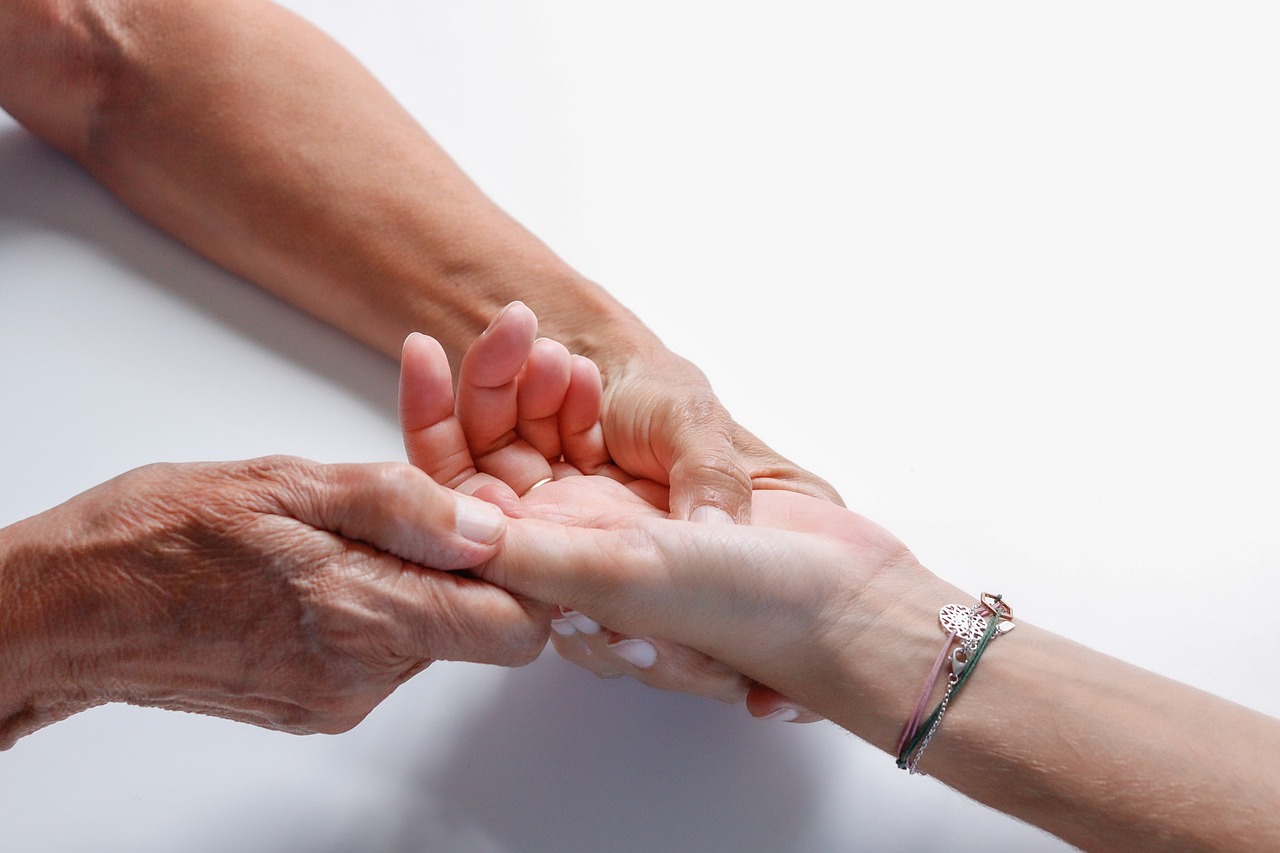This article delves into the fascinating world of traditional Asian massage techniques and their integration with contemporary medical practices. By examining the methodologies and benefits of these ancient practices, we aim to highlight the growing body of evidence that supports their role in holistic healthcare.
Understanding Asian Massage Techniques
Asian massage encompasses a variety of practices, including Shiatsu, Thai massage, and Tui Na. Each technique is deeply rooted in its respective culture and philosophy, focusing on the manipulation of the body to promote overall health and wellness. These methods often emphasize the flow of energy, or Qi, throughout the body, which is believed to be essential for maintaining balance and health.
The Science Behind Massage Therapy
Numerous studies have demonstrated that massage therapy can effectively reduce stress, alleviate pain, and promote overall well-being. In a modern healthcare context, these benefits make Asian massage techniques a valuable complementary treatment option. Research indicates that regular massage can enhance mood, improve sleep quality, and even bolster the immune system.
Benefits of Asian Massage Techniques
- Improved Circulation: Techniques like acupressure stimulate blood flow, aiding in recovery.
- Muscle Relaxation: Deep tissue methods help relieve tension and soreness.
- Enhanced Flexibility: Stretching techniques used in Thai massage can increase range of motion.
Stress Reduction and Relaxation
Many Asian massage methods are specifically designed to promote deep relaxation. This can lead to lower cortisol levels, significantly improving mental health by reducing anxiety and stress.
Pain Management Strategies
Techniques such as acupressure and deep tissue massage effectively target specific pain points, providing relief from chronic conditions like back pain and arthritis. These approaches are increasingly recognized for their potential to complement traditional pain management strategies.
Integrating Asian Massage into Healthcare
Healthcare professionals are increasingly acknowledging the value of incorporating Asian massage techniques into their treatment plans. By doing so, they enhance patient outcomes through a more holistic approach that addresses both physical and emotional well-being.
Training and Certification for Practitioners
To ensure safe and effective treatments, proper training and certification for practitioners of Asian massage are essential. This alignment with both traditional practices and modern medical standards is crucial for maintaining quality care.
Research and Evidence Supporting Asian Massage
Recent studies have highlighted the efficacy of Asian massage techniques in treating various ailments. This ongoing research is paving the way for greater acceptance of these practices in mainstream medicine, as more healthcare providers recognize their benefits.
Future Directions for Research
Continued research into Asian massage techniques is vital for understanding their mechanisms and potential roles in integrative healthcare. This will ensure the continuous improvement of practices and the establishment of standardized protocols.

Understanding Asian Massage Techniques
Asian massage techniques have gained significant recognition in the realm of holistic healthcare, offering a rich tapestry of practices that promote physical and mental well-being. Among the most notable methods are Shiatsu, Thai, and Tui Na, each with its own distinct philosophy and approach to body manipulation.
Shiatsu, originating from Japan, is based on the principles of traditional Chinese medicine. It utilizes finger pressure on specific points along the body’s meridians to restore energy balance, alleviate tension, and enhance overall vitality. This method emphasizes the connection between mind and body, promoting relaxation and emotional stability.
Thai massage, on the other hand, is a dynamic practice that combines acupressure, yoga-like stretching, and rhythmic movements. Practitioners use their hands, feet, and even elbows to manipulate the recipient’s body into various positions, facilitating improved flexibility and circulation. This technique is often described as a form of assisted yoga, making it particularly beneficial for those seeking to enhance their physical performance and relieve muscle stiffness.
Tui Na is a traditional Chinese massage therapy that integrates acupressure and various hand techniques to stimulate the body’s energy flow. It is often used to treat specific ailments such as digestive issues, respiratory problems, and musculoskeletal pain. Tui Na practitioners are trained to assess the patient’s condition and tailor their approach to meet individual needs.
Each of these techniques not only aims to address physical discomfort but also incorporates a holistic view of health, recognizing the interplay between the body, mind, and spirit. By understanding and integrating these practices into modern healthcare, patients can experience a comprehensive approach to wellness that enhances both physical and mental health.
- Shiatsu: Focuses on energy balance through pressure points.
- Thai Massage: Combines stretching with acupressure for flexibility.
- Tui Na: Targets specific ailments through energy manipulation.
Incorporating these ancient techniques into contemporary treatment plans can lead to improved patient outcomes and a deeper understanding of the interconnectedness of health and wellness.

The Science Behind Massage Therapy
Massage therapy has gained significant recognition in recent years, not just as a luxury but as a vital component of holistic healthcare. Research has consistently demonstrated that massage therapy can effectively reduce stress, alleviate pain, and enhance overall well-being. This makes it a valuable complementary treatment within modern healthcare settings.
Studies indicate that massage therapy can trigger physiological responses that promote healing. For instance, it has been shown to lower levels of the stress hormone cortisol, which is often elevated in individuals dealing with chronic stress. By reducing cortisol levels, massage can lead to improved mental health and a greater sense of relaxation.
Furthermore, massage therapy can stimulate the production of endorphins, the body’s natural painkillers. This biochemical response not only helps in pain management but also enhances mood, making patients feel more at ease and less anxious. Techniques such as acupressure and deep tissue massage are particularly effective in targeting specific pain points, providing relief from conditions like chronic back pain and arthritis.
In addition to physical benefits, massage therapy plays a crucial role in promoting emotional well-being. The calming effects of various massage techniques can lead to improved sleep quality, increased energy levels, and a more positive outlook on life. This holistic approach aligns well with the growing trend in healthcare that emphasizes the importance of treating both the body and mind.
As healthcare professionals increasingly recognize the benefits of integrating massage therapy into treatment plans, the demand for qualified practitioners continues to rise. This shift reflects a broader understanding of the interconnectedness of physical and mental health, making massage therapy a valuable asset in modern medicine.
Benefits of Asian Massage Techniques
Asian massage techniques are gaining recognition not only for their cultural significance but also for their profound impact on health and wellness. These traditional practices incorporate various methods that can enhance physical and mental well-being.
Asian massage techniques offer numerous benefits that can significantly improve overall health. Among these benefits are:
- Improved Circulation: Techniques such as Shiatsu and Thai massage stimulate blood flow, which can lead to better oxygen and nutrient delivery throughout the body. This enhanced circulation can promote healing and recovery from injuries.
- Muscle Relaxation: Many Asian massage styles focus on relieving tension in muscles. By applying pressure to specific points, these techniques can help alleviate muscle tightness and discomfort, leading to greater relaxation and comfort.
- Enhanced Flexibility: Regular practice of Asian massage can improve joint mobility and flexibility. Techniques like Tui Na involve stretching and manipulation that can help maintain or increase range of motion, which is crucial for physical performance and daily activities.
- Stress Reduction: The calming nature of Asian massage techniques can significantly lower stress levels. By promoting relaxation and reducing cortisol levels, these therapies can enhance mental health and overall emotional well-being.
- Pain Management: Specific methods such as acupressure target pain points in the body. This can provide relief from chronic pain conditions, including headaches, back pain, and arthritis, making Asian massage a valuable tool for pain management.
Incorporating Asian massage techniques into a wellness routine can lead to a holistic approach to health, supporting both physical and mental aspects of well-being. As more individuals seek alternative therapies, the integration of these techniques into modern healthcare is becoming increasingly prevalent.
Stress Reduction and Relaxation
Stress has become a prevalent issue in today’s fast-paced world, leading to a myriad of health problems. Asian massage techniques offer an effective solution to combat this growing concern. These traditional practices, such as Shiatsu, Thai massage, and Tui Na, are specifically designed to promote deep relaxation and well-being.
One of the primary benefits of these techniques is their ability to significantly lower cortisol levels, the hormone associated with stress. By engaging in regular sessions of Asian massage, individuals can experience a profound sense of calm, which is crucial for mental health. Studies have shown that a decrease in cortisol can lead to reduced anxiety and improved mood, making these techniques not only a luxury but a necessity for many.
Moreover, the methodologies employed in Asian massage focus on manipulating the body’s energy pathways, which can enhance the flow of Qi (or life force) throughout the body. This holistic approach not only addresses physical tension but also targets emotional blockages that contribute to stress and anxiety. As a result, clients often report feeling more centered and grounded after their sessions.
- Shiatsu: Utilizes finger pressure on specific points to release tension and promote relaxation.
- Thai Massage: Combines acupressure and yoga-like stretching to enhance flexibility and reduce stress.
- Tui Na: Focuses on the manipulation of muscles and joints to alleviate discomfort and encourage relaxation.
Incorporating Asian massage techniques into a regular wellness routine can lead to lasting improvements in both mental and physical health. As more individuals seek alternative methods to manage stress, the integration of these traditional practices into modern healthcare becomes increasingly relevant. By embracing the benefits of Asian massage, individuals can take proactive steps towards achieving a more balanced and fulfilling life.
Pain Management Strategies
are essential in addressing chronic conditions that affect millions of individuals worldwide. Among the various approaches available, traditional Asian massage techniques, particularly acupressure and deep tissue massage, have gained recognition for their effectiveness in alleviating pain.
Acupressure, a practice rooted in ancient Chinese medicine, involves applying pressure to specific points on the body. This technique is believed to stimulate the body’s natural healing processes, promoting energy flow and reducing pain. Research indicates that acupressure can be particularly effective for conditions such as chronic back pain and arthritis, providing a non-invasive alternative to pharmaceutical interventions.
On the other hand, deep tissue massage focuses on realigning deeper layers of muscles and connective tissue. This method is particularly beneficial for those suffering from muscle tension and chronic pain. By applying firm pressure and slow strokes, deep tissue massage targets the underlying muscles, helping to relieve tension and improve mobility. Studies have shown that patients who undergo deep tissue massage often experience significant reductions in pain levels and improved overall physical function.
Both techniques not only address physical pain but also contribute to mental well-being. The relaxation response triggered by these therapies can lead to decreased levels of stress and anxiety, further enhancing their overall effectiveness in pain management. As healthcare providers increasingly recognize the holistic benefits of these methods, integrating Asian massage techniques into treatment plans is becoming more common.
In summary, acupressure and deep tissue massage are valuable tools in pain management strategies. Their ability to target specific pain points and promote overall well-being makes them indispensable in the realm of complementary healthcare.
Integrating Asian Massage into Healthcare
In recent years, the integration of Asian massage techniques into conventional healthcare practices has gained significant traction. This shift is driven by a growing recognition among healthcare professionals of the profound benefits these techniques can offer in enhancing patient care. By adopting a more holistic approach, practitioners are discovering that combining traditional methods with modern medicine can lead to improved patient outcomes.
Asian massage encompasses a variety of techniques, including Shiatsu, Thai massage, and Tui Na. Each of these modalities utilizes unique philosophies that focus on the body’s energy pathways and physical manipulation to promote healing and wellness. This multifaceted approach not only addresses physical ailments but also considers the emotional and psychological aspects of health, making it a valuable addition to treatment plans.
Research indicates that massage therapy can significantly reduce stress levels, alleviate pain, and enhance overall well-being. For instance, studies have shown that regular sessions of Asian massage can lead to decreased cortisol levels, which is crucial for managing stress and anxiety. Furthermore, techniques such as acupressure and deep tissue massage have been found effective in targeting specific pain points, providing relief for chronic conditions like back pain and arthritis.
As more healthcare professionals embrace these techniques, the landscape of patient care is evolving. Integrating Asian massage into treatment plans not only enriches the therapeutic experience but also fosters a deeper connection between practitioners and patients. This collaborative approach encourages patients to take an active role in their healing process, ultimately leading to better health outcomes.
In conclusion, the incorporation of Asian massage techniques into healthcare is not merely a trend but a significant movement towards a more comprehensive understanding of health and wellness. As evidence continues to mount regarding their efficacy, it is clear that these traditional practices hold valuable insights for modern medicine.

Training and Certification for Practitioners
In the realm of health and wellness, training and certification for practitioners of Asian massage are not merely formalities; they are essential components that ensure the delivery of safe and effective treatments. As the popularity of Asian massage techniques continues to rise, it becomes increasingly important for practitioners to possess a solid foundation in both traditional practices and modern medical standards.
Asian massage encompasses a variety of techniques, including Shiatsu, Thai massage, and Tui Na, each rooted in rich cultural traditions. These practices emphasize the importance of energy flow and balance within the body. However, without proper training, practitioners may struggle to apply these ancient techniques effectively, potentially leading to ineffective treatments or even injury. Therefore, rigorous training programs are vital.
Certification programs provide a structured pathway for practitioners to gain the necessary knowledge and skills. These programs typically cover anatomy, physiology, and the specific methodologies of various Asian massage techniques. Furthermore, they often include practical components that allow practitioners to hone their skills under the guidance of experienced instructors.
Additionally, ongoing education is crucial in this field. As new research emerges, practitioners must stay informed about the latest developments in both Asian massage and modern healthcare. This commitment to continual learning not only enhances their skill set but also ensures that they provide the highest level of care to their clients.
Moreover, understanding the regulatory standards governing massage therapy can help practitioners navigate the complexities of legal compliance. This knowledge fosters a sense of professionalism and ethical responsibility, ultimately enhancing client trust.
In summary, the journey to becoming a skilled Asian massage practitioner is paved with dedication to training and certification. By prioritizing these elements, practitioners can ensure that their treatments are not only effective but also align with the evolving landscape of healthcare.
Regulatory Standards and Practices
Understanding the regulatory landscape for massage therapy is essential for practitioners who strive to maintain compliance with local, state, and national laws. This knowledge not only ensures adherence to legal requirements but also promotes the highest standards of care for clients. As the field of massage therapy evolves, regulations can vary significantly, making it crucial for professionals to stay informed.
- Licensing Requirements: Most regions require massage therapists to obtain a license, which often involves completing a specific number of training hours and passing a standardized exam. Familiarity with these requirements is vital for legal practice.
- Continuing Education: Many states mandate ongoing education to ensure practitioners remain updated on the latest techniques and ethical practices. This commitment to learning enhances the quality of care provided.
- Insurance and Liability: Practitioners should secure liability insurance to protect themselves against potential legal claims. Understanding the nuances of insurance policies is essential for effective risk management.
- Health and Safety Standards: Compliance with health regulations, including sanitation practices and client confidentiality, is critical. Practitioners must adhere to guidelines that safeguard both their clients and themselves.
- Ethical Considerations: Beyond legal compliance, practitioners should also embrace ethical standards that prioritize client welfare, informed consent, and professional integrity.
Staying abreast of these regulations not only helps practitioners avoid legal pitfalls but also enhances their credibility and professionalism in the eyes of clients. By understanding and implementing these standards, massage therapists can contribute to a reputable and safe practice that benefits both practitioners and clients alike.
Ethics and Professionalism in Massage Therapy
Ethics and professionalism in massage therapy are fundamental aspects that shape the practice and ensure a safe, respectful environment for clients. Practitioners are guided by ethical considerations that not only dictate their behavior but also establish a framework for client interactions.
At the core of ethical practice is the concept of client autonomy. Massage therapists must respect the personal boundaries and choices of their clients. This involves obtaining informed consent before any treatment, ensuring that clients are fully aware of what to expect during their sessions. Practitioners should always communicate openly about the techniques used and any potential discomfort that may arise, fostering a trusting relationship.
Another essential element is the commitment to professionalism. This includes maintaining a high standard of conduct, which encompasses punctuality, appropriate attire, and a clean, safe environment. Therapists should also adhere to confidentiality agreements, protecting clients’ personal information and treatment details from unauthorized disclosure.
- Respect for Diversity: Practitioners must acknowledge and embrace the diverse backgrounds and beliefs of their clients. This respect enhances the therapeutic relationship and ensures that treatments are culturally sensitive.
- Ongoing Education: Continuous professional development is vital. Therapists should stay updated on the latest research, techniques, and ethical guidelines to provide the best care possible.
- Self-Care: To maintain a high level of professionalism, therapists must prioritize their own well-being. This includes managing stress and avoiding burnout, which can negatively impact client care.
The integration of ethical considerations into massage therapy not only enhances the professional image of practitioners but also significantly improves client satisfaction and outcomes. By fostering a culture of respect and integrity, massage therapists can create a healing environment that benefits both the client and the practitioner.

Patient Perspectives on Asian Massage
In recent years, there has been a growing interest in the role of Asian massage techniques in enhancing overall health and wellness. Patients from various backgrounds have shared their experiences, shedding light on how these practices have positively influenced their lives. The testimonials often reveal a range of benefits, from stress relief to improved physical health, highlighting the effectiveness of these traditional methods.
Many individuals report that Shiatsu, a form of Japanese massage, has significantly alleviated their chronic pain conditions. Patients have noted that the targeted pressure applied during sessions helps to relieve tension in specific areas, leading to a noticeable decrease in discomfort. For instance, one patient shared, “After just a few sessions of Shiatsu, my back pain diminished, and I felt more mobile than I had in years.”
Similarly, Thai massage is frequently praised for its ability to enhance flexibility and promote relaxation. Clients often describe the invigorating stretches and rhythmic movements as transformative. One testimonial stated, “The combination of stretching and deep pressure left me feeling revitalized and stress-free, as if a weight had been lifted off my shoulders.”
Moreover, Tui Na, a traditional Chinese therapeutic massage, has garnered attention for its holistic approach to health. Patients have highlighted its role in improving circulation and supporting the body’s natural healing processes. A patient remarked, “Tui Na not only eased my muscle tension but also helped me feel more balanced and energized overall.”
These personal accounts serve as compelling evidence of the profound impact that Asian massage techniques can have on health and wellness. By integrating these practices into their healthcare routines, many individuals have discovered a path to improved well-being, demonstrating the importance of considering alternative therapies in conjunction with modern medicine.

Research and Evidence Supporting Asian Massage
Recent advancements in healthcare research have underscored the significant role that Asian massage techniques can play in treating a variety of ailments. These traditional practices, which include methods such as Shiatsu, Thai massage, and Tui Na, are increasingly being recognized for their therapeutic benefits in the realm of modern medicine. As more studies emerge, the integration of these techniques into conventional treatment plans is gaining traction, paving the way for a more holistic approach to patient care.
Numerous studies have demonstrated the effectiveness of Asian massage in managing conditions such as chronic pain, anxiety, and stress-related disorders. For instance, a study published in the Journal of Alternative and Complementary Medicine found that participants receiving regular Thai massage reported significant reductions in pain and improvements in their overall quality of life. Similarly, Shiatsu has been shown to enhance circulation and promote relaxation, making it a valuable addition to treatment protocols for patients dealing with various health issues.
Clinical trials focusing on Asian massage techniques have provided compelling evidence supporting their use. A meta-analysis of several trials indicated that acupressure—a technique rooted in traditional Chinese medicine—effectively alleviated symptoms of nausea and vomiting in patients undergoing chemotherapy. These findings highlight the potential of Asian massage not only as a form of relaxation but also as a practical intervention in managing specific medical conditions.
- Improved Pain Management: Many patients have reported significant relief from chronic pain conditions after incorporating Asian massage into their treatment regimen.
- Enhanced Mental Well-being: Patients often express feelings of deep relaxation and reduced anxiety, contributing to better mental health outcomes.
- Increased Flexibility: Regular sessions have been linked to improved mobility and flexibility, aiding in rehabilitation efforts.
The growing body of research and patient testimonials supports the idea that Asian massage techniques can serve as effective complementary treatments within the healthcare system. As acceptance of these methods continues to expand, practitioners and patients alike stand to benefit from a more integrated approach to health and wellness.
Case Studies and Clinical Trials
In recent years, there has been a growing interest in the integration of traditional practices such as Asian massage into modern healthcare. This interest is largely driven by case studies and clinical trials that provide compelling evidence of the benefits these techniques offer. By examining real-world applications, healthcare professionals are beginning to recognize the potential of Asian massage as a complementary treatment.
Asian massage techniques, including Shiatsu, Thai massage, and Tui Na, have been the subject of various studies that highlight their effectiveness in treating a range of conditions. For instance, a clinical trial involving patients with chronic lower back pain demonstrated significant improvements in pain levels and mobility after receiving regular sessions of Thai massage. Such findings underscore the effectiveness of these ancient techniques in addressing modern health issues.
Moreover, case studies from healthcare settings illustrate how Asian massage can be successfully integrated into treatment plans for patients undergoing rehabilitation. In one notable case, a patient recovering from surgery experienced enhanced recovery times and reduced pain levels when incorporating Shiatsu into their post-operative care. These examples not only showcase the practical applications of Asian massage but also provide a framework for its acceptance in conventional medicine.
Furthermore, the physiological mechanisms behind these benefits are being explored in clinical research. Studies suggest that techniques such as acupressure can stimulate the body’s natural healing processes, leading to improved circulation and reduced muscle tension. This scientific backing is crucial for healthcare providers who are considering incorporating these methods into their practice.
As the body of evidence grows, it becomes increasingly clear that Asian massage techniques offer valuable benefits in various healthcare contexts. The integration of these practices not only enhances patient outcomes but also promotes a more holistic approach to health and wellness.
Future Directions for Research
As the field of integrative healthcare continues to evolve, ongoing research into Asian massage techniques plays a pivotal role in uncovering their underlying mechanisms and potential benefits. This exploration is crucial for enhancing our understanding of how these traditional practices can be effectively integrated into modern medical frameworks.
Asian massage techniques, which include methods such as Shiatsu, Thai massage, and Tui Na, are rooted in ancient philosophies that emphasize the balance of energy within the body. By investigating these techniques, researchers aim to identify specific physiological responses that occur during and after treatment. For instance, studies have begun to document how these practices can influence the nervous system, promote circulation, and even stimulate the release of endorphins, the body’s natural painkillers.
Furthermore, understanding the mechanisms behind these techniques can help clarify their roles in managing various health conditions. For example, research indicates that certain Asian massage modalities may be particularly effective in alleviating chronic pain, reducing anxiety, and enhancing overall well-being. By systematically studying these outcomes, healthcare providers can develop more comprehensive treatment plans that incorporate both traditional and modern approaches.
Moreover, the integration of Asian massage into clinical settings necessitates a focus on evidence-based practices. Gathering data from clinical trials and patient feedback can provide valuable insights into the efficacy of these techniques. This information is essential for establishing guidelines and protocols that ensure safety and effectiveness, ultimately leading to improved patient outcomes.
As we look to the future, it is imperative that researchers continue to investigate the potential of Asian massage techniques within the broader context of integrative healthcare. By fostering collaboration between traditional practitioners and modern medical professionals, we can ensure that these ancient practices are not only preserved but also enhanced through scientific inquiry and innovation.
Frequently Asked Questions
- What are the main benefits of Asian massage techniques?
Asian massage techniques offer a variety of benefits, including improved circulation, muscle relaxation, and enhanced flexibility. These practices are designed to promote overall health and well-being, making them a great complement to modern medicine.
- How does Asian massage help with stress reduction?
Many Asian massage methods focus on deep relaxation, which can significantly lower cortisol levels in the body. This not only helps reduce anxiety and stress but also improves mental health, creating a sense of calm and tranquility.
- Can Asian massage techniques aid in pain management?
Absolutely! Techniques like acupressure and deep tissue massage are specifically designed to target pain points. They can provide effective relief for chronic conditions such as back pain and arthritis, making them valuable tools in pain management.
- Is training necessary for Asian massage practitioners?
Yes, proper training and certification are crucial for practitioners of Asian massage. This ensures they provide safe, effective treatments that align with both traditional practices and modern medical standards.
- What does research say about the effectiveness of Asian massage?
Recent studies have highlighted the efficacy of Asian massage techniques in treating various ailments. This growing body of evidence is paving the way for greater acceptance of these practices in mainstream healthcare.












